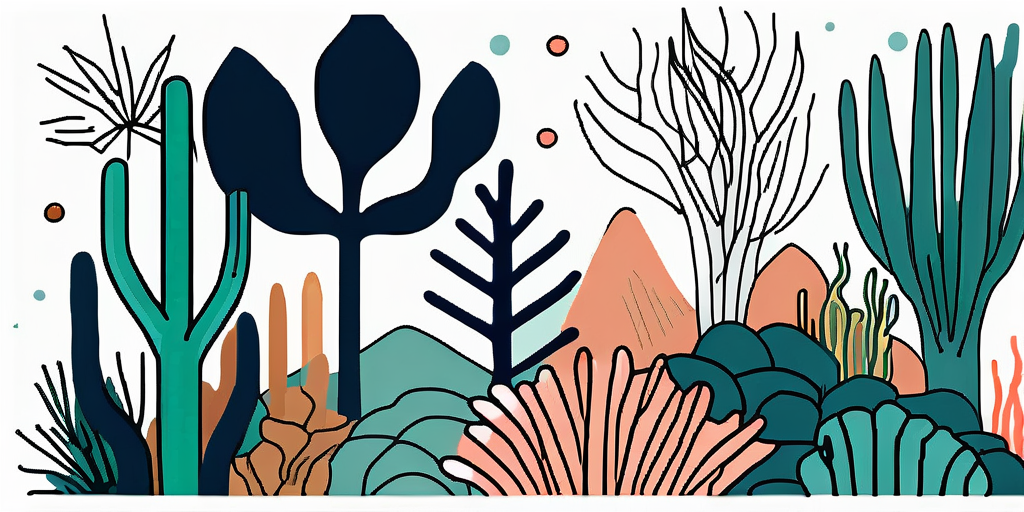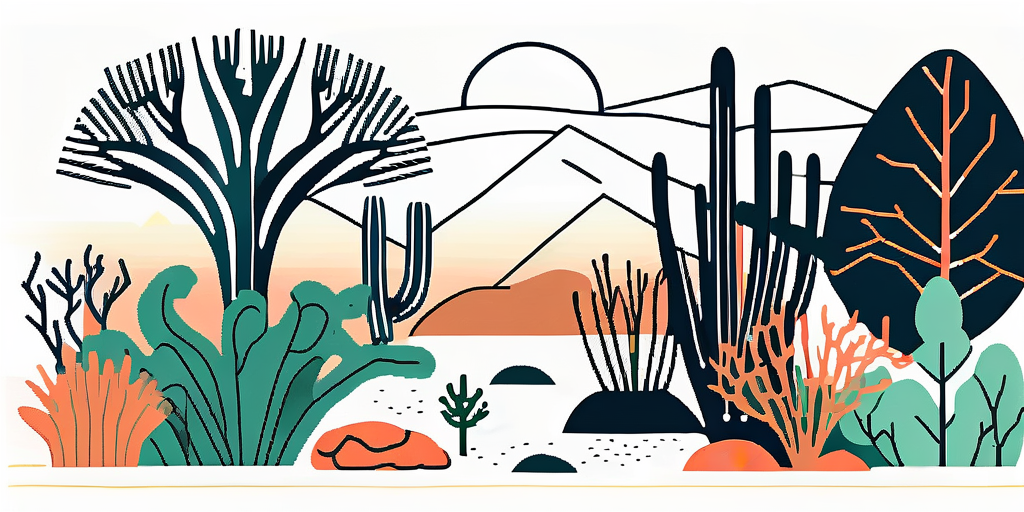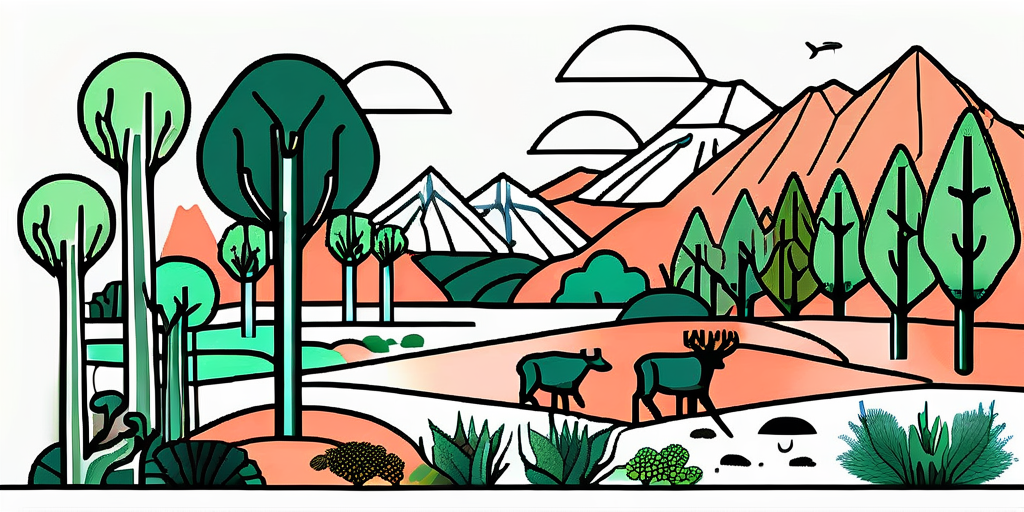what are biomes
Biomes play a crucial role in the delicate balance of ecosystems, providing a home to a wide variety of plant and animal life. Understanding the concept of biomes is essential to comprehend the intricate mechanisms that sustain life on our planet.
Understanding the Concept of Biomes
Precisely defining biomes can be challenging, as they encompass vast areas and are characterized by various factors such as climate, vegetation, and geographical features. In essence, a biome refers to a distinct ecological community that exists in a specific region, distinguished by its unique set of environmental conditions.
Biomes are often defined based on prevailing climate patterns, including temperature, precipitation, and sunlight. These factors shape the dynamics of the ecosystem, impacting the types of organisms that can thrive within a particular biome.
Definition of Biomes
A biome can be broadly understood as a large-scale ecosystem classified by its predominant vegetation type and the adaptability of the resident animals to the prevailing climate conditions. As such, biomes can range from lush rainforests to arid deserts, from expansive grasslands to frigid tundras.
Biomes are not restricted to terrestrial environments; they also encompass aquatic ecosystems, both freshwater and marine. Oceans, lakes, rivers, and wetlands are all part of the intricate web of biomes that contribute to the overall health of the planet.
Importance of Biomes in Ecosystems
Biomes are the foundations of the world’s ecosystems, sustaining life in all its forms. They are essential for regulating climate, providing habitats for countless species, and offering crucial resources for human societies.
One crucial consequence of biomes is their impact on biodiversity. Different biomes support a wide array of organisms with unique adaptations, contributing to the incredible variation of life on Earth. Biomes act as reservoirs of genetic diversity, ensuring the resilience and adaptability of species in the face of environmental changes.
Furthermore, biomes influence global climate patterns. Through the exchange of gases, such as carbon dioxide and oxygen, and the regulation of water cycles, biomes play a significant role in stabilizing the Earth’s atmospheric composition.
Exploring the Diversity of Terrestrial Biomes
Terrestrial biomes encompass a remarkable range of ecosystems, each with its own distinct characteristics and ecological dynamics. Let’s delve into some of the most fascinating terrestrial biomes:
The tropical rainforest biome is renowned for its lush vegetation, towering trees, and incredible biodiversity. These biomes are found near the equator, where they receive abundant rainfall and enjoy warm temperatures year-round. The rainforests are home to countless species of plants, animals, and insects, many of which are still undiscovered by scientists.
On the other end of the spectrum, we have the arid desert biome. These vast expanses of dry, barren land are characterized by extreme temperatures, scarce rainfall, and limited vegetation. Despite the harsh conditions, deserts are home to unique plants and animals that have evolved remarkable adaptations to survive in this challenging environment.
Unveiling the Wonders of Aquatic Biomes
While terrestrial biomes capture our attention, we must not overlook the wonders of aquatic biomes. Let’s dive into the fascinating world of freshwater and marine ecosystems:
The ocean biome is the largest and most diverse biome on Earth. It covers about 70% of the planet’s surface and is home to an astonishing variety of marine life. From colorful coral reefs teeming with vibrant fish to the mysterious depths of the abyssal zone, the ocean biome is a treasure trove of biodiversity and natural wonders.
Freshwater biomes, such as lakes, rivers, and wetlands, are equally captivating. These vital sources of freshwater support a wide range of plants, animals, and microorganisms. Wetlands, in particular, play a crucial role in filtering water, preventing floods, and providing habitat for numerous species, making them invaluable ecosystems.
As we explore the intricacies of biomes, it becomes evident that they are not just abstract concepts but living, breathing entities that shape the world we inhabit. From the towering trees of the rainforests to the vast expanse of the oceans, biomes are the building blocks of life on Earth, deserving our utmost admiration and protection.
Different Types of Biomes
Exploring the diversity of biomes reveals the astonishing range of habitats and ecosystems found across the globe. From the depths of the ocean to the highest mountaintops, each biome offers a distinct set of conditions that shape the organisms that call it home.

Let’s dive deeper into the fascinating world of biomes and discover more about the incredible diversity they hold.
Aquatic Biomes
Aquatic biomes encompass the vast bodies of water, from the mighty oceans to small ponds and rivers. These biomes range from the sun-drenched coral reefs teeming with marine life to the mysterious depths of the abyssal zone, where unique and elusive species thrive.
Within aquatic biomes, variations in temperature, salinity, and nutrient levels create different habitats, such as the cold and nutrient-rich waters of polar regions or the warm and vibrant ecosystems found in coral reefs. These biomes are not only home to an abundance of marine creatures but also play a crucial role in regulating the Earth’s climate and providing oxygen through photosynthesis.
Desert Biomes
The desert biome, often associated with vast stretches of sand, actually encompasses a diverse range of arid environments. Deserts can vary considerably depending on their location and specific characteristics, such as temperature extremes and precipitation levels.
Despite the harsh conditions, desert biomes are home to a surprising number of resilient species, showcasing remarkable adaptations for survival in arid environments. From cacti with their water-storing capabilities to nocturnal animals that have evolved to escape the scorching sun, desert biomes exemplify nature’s ability to thrive against all odds. Exploring these biomes reveals a hidden world of fascinating creatures and unique survival strategies.
Forest Biomes
Forest biomes represent some of the most biodiverse ecosystems on Earth, characterized by high levels of precipitation and ample sunlight. These biomes range from the dense tropical rainforests, teeming with life and exuberant foliage, to the coniferous forests found in colder regions.
Forests provide a wealth of resources, including timber, medicinal plants, and essential ecosystem services like carbon sequestration and soil retention. However, the continuous deforestation and degradation of forest biomes pose significant threats to both the environment and the countless species that depend on them. Exploring these biomes not only reveals the beauty of nature but also highlights the urgent need for conservation efforts to protect these invaluable ecosystems.
Grassland Biomes
Grassland biomes are vast stretches of land dominated by, as the name suggests, grasses. These biomes can be found in various parts of the world and are characterized by their low rainfall and distinctive vegetation patterns.
Grasslands support a wide range of herbivores, including iconic species such as bison in North America and wildebeest in Africa. They also play a crucial role in carbon storage and the regulation of water cycles, making them essential for maintaining the delicate balance of the planet’s ecosystems. Exploring these biomes unveils the interconnectedness of species and the intricate web of life that relies on these grassy landscapes.
Tundra Biomes
The tundra biome represents the harshest and least hospitable environments on Earth, found predominantly in the polar regions. These frozen landscapes are characterized by extremely low temperatures, strong winds, and a short growing season.
Despite the harsh conditions, tundra biomes support a surprising array of life, including iconic species like polar bears and musk oxen. The fragile nature of tundra ecosystems underscores the need for careful conservation and sustainable practices to protect these delicate habitats from further degradation. Exploring these biomes offers a glimpse into the resilience and adaptability of life in the face of extreme challenges.
As we continue to explore and study the diverse biomes of our planet, we gain a deeper understanding of the intricate relationships between organisms and their environments. Each biome holds its own wonders and secrets, waiting to be discovered and appreciated. So let’s embark on this journey of exploration and marvel at the incredible tapestry of life that exists within our world’s biomes.
Characteristics of Biomes
While the diversity of biomes may seem overwhelming, certain characteristics can help us better understand and appreciate these unique ecosystems.

Let’s delve deeper into the fascinating world of biomes and explore some additional details that shed light on their complexity.
Climate and Weather Patterns
Climate plays a significant role in shaping biomes. Factors such as temperature, rainfall, and sunlight availability determine the types of organisms that can survive within a specific biome.
But did you know that climate variations within a biome can create microclimates? These smaller-scale variations are caused by factors like elevation, shade, or proximity to bodies of water. Microclimates create additional niches within a biome, supporting even greater species diversity. For example, in a tropical rainforest, the understory beneath the towering canopy may have its own unique microclimate, fostering the growth of different plants and providing habitat for specific animal species.
Plant and Animal Life
Biomes are characterized by specific sets of vegetation that have adapted to the prevailing environmental conditions. From towering trees in rainforests to hardy shrubs in deserts, each biome showcases unique plant life.
Similarly, animal life in each biome has evolved distinct adaptations to survive and thrive within their respective environments. From camouflage to hibernation, the strategies employed by animals in different biomes are as diverse as the biomes themselves. For instance, in the Arctic tundra, animals like the Arctic fox have developed thick fur and a keen sense of hearing to navigate the harsh conditions, while the kangaroo in the Australian outback has evolved powerful hind legs for hopping long distances in search of water and food.
It’s important to note that biomes are not static entities. They are continuously evolving and responding to changes in climate and other factors. Some species may be more resilient than others, but human activities are increasing the pressure on biomes and threatening their delicate balance. Conservation efforts and sustainable practices are crucial in ensuring the preservation of these remarkable ecosystems.
Geographical Distribution
Biomes are not evenly distributed across the globe. Factors such as latitude, altitude, and proximity to bodies of water influence the distribution and characteristics of different biomes.
From the lush equatorial rainforests to the barren landscapes of the Arctic, the geographic distribution of biomes plays a vital role in shaping the planet’s overall biodiversity and ecological dynamics. For example, the Amazon rainforest, located near the equator, is home to the largest variety of plant and animal species on Earth, while the taiga biome, found in the northern parts of North America and Eurasia, is known for its coniferous forests and unique wildlife like the Siberian tiger.
Understanding the geographical distribution of biomes helps scientists and conservationists identify areas of high biodiversity and prioritize conservation efforts. It also highlights the interconnectedness of different biomes and the need for global collaboration in protecting our planet’s natural heritage.
Human Impact on Biomes
Human activities have had a profound impact on biomes worldwide, leading to habitat destruction, species extinction, and climate change. Recognizing the consequences of our actions is crucial for finding solutions to mitigate and reverse the damage caused.

Let’s delve deeper into some of the key factors contributing to the degradation of biomes and explore the urgent need for sustainable practices.
Deforestation and Its Effects
Deforestation, driven by agriculture, logging, and urbanization, represents a significant threat to many biomes, particularly forests. The loss of tree cover not only disrupts ecosystems but also contributes to the release of carbon dioxide into the atmosphere, exacerbating climate change.
Imagine a lush tropical rainforest teeming with life. Now picture it transformed into vast stretches of barren land. This devastating transformation not only destroys the habitat of countless species but also disrupts the intricate web of interactions that sustain the delicate balance of these biomes.
Efforts to curb deforestation and promote reforestation are essential to conserve the biodiversity of forest biomes and mitigate the impacts of climate change. By planting trees and implementing sustainable logging practices, we can help restore the health of these vital ecosystems.
Climate Change and Biomes
Climate change is altering the conditions that shape biomes, impacting the distribution and viability of ecosystems worldwide. Rising temperatures, altering precipitation patterns, and melting polar ice caps are just a few of the consequences of a changing climate.
Imagine a world where polar bears struggle to find stable ice platforms for hunting, or where coral reefs bleach and crumble under the stress of warmer waters. These are the harsh realities that many biomes face as a result of climate change.
As biomes shift or disappear altogether, species that are unable to adapt quickly enough face potential extinction. The urgency to curb greenhouse gas emissions and implement sustainable practices cannot be overstated. By reducing our carbon footprint and transitioning to renewable energy sources, we can help protect the integrity of biomes and safeguard the countless species that call them home.
Urbanization and Biomes
The rapid expansion of urban areas encroaches upon natural habitats and disrupts the delicate balance of biomes. Cities not only consume vast amounts of resources but also generate pollution and contribute to the degradation of the surrounding ecosystems.
Imagine a sprawling metropolis swallowing up once-thriving grasslands, displacing wildlife and fragmenting their habitats. The concrete jungle replaces the lush greenery, and the symphony of nature is drowned out by the cacophony of human activity.
Implementing sustainable urban planning, protecting green spaces, and adopting eco-friendly practices are crucial steps towards minimizing the negative impact of urbanization on biomes. By designing cities that prioritize green infrastructure, such as parks and rooftop gardens, we can create urban spaces that coexist harmoniously with nature.
By understanding the interconnectedness of human activities and biomes, we can work towards a future where our impact on these delicate ecosystems is minimized. It is our responsibility to protect and preserve the incredible biodiversity that exists within biomes, ensuring a sustainable and vibrant planet for generations to come.
Conservation of Biomes
Despite the challenges we face in preserving biomes, there is hope for a more sustainable future. It is essential to recognize the valuable role that biomes play in maintaining the health and well-being of our planet.
Biomes are not just mere collections of plants and animals; they are intricate and interconnected systems that provide essential services to our planet. They regulate the climate, purify the air we breathe, filter the water we drink, and provide habitats for countless species. Biomes are like the lifeblood of our planet, sustaining its delicate balance and ensuring the survival of all living organisms.
Role of International Organizations
International organizations dedicated to preserving biodiversity and combating climate change play a vital role in the conservation of biomes. By establishing protected areas, conducting research, and implementing conservation strategies, these organizations contribute to the long-term viability of biomes worldwide.
One such organization is the United Nations Environment Programme (UNEP), which works tirelessly to protect and restore biomes across the globe. Through initiatives like the Convention on Biological Diversity and the Intergovernmental Panel on Climate Change, UNEP brings together nations, scientists, and communities to address the pressing issues threatening our biomes.
Sustainable Practices and Biomes
Adopting sustainable practices is crucial for curbing the destruction of biomes and protecting the delicate balance of ecosystems. From promoting renewable energy sources to implementing responsible land management practices, every individual and community can contribute to the preservation of biomes.
For example, sustainable agriculture practices such as organic farming and agroforestry can help minimize the negative impacts of conventional farming on biomes. By avoiding the use of harmful chemicals and embracing biodiversity-friendly approaches, farmers can protect soil health, preserve water resources, and maintain the integrity of surrounding biomes.
Future of Biomes: Predictions and Possibilities
As we move forward, addressing the challenges facing biomes will require innovative solutions and a collective effort. Scientific advancements, international cooperation, and a fundamental shift in our relationship with the natural world hold the promise of a future where biomes thrive, sustaining life on Earth for generations to come.
Emerging technologies like remote sensing and artificial intelligence are revolutionizing our ability to monitor and manage biomes. These tools enable us to gather precise data on ecosystem health, identify areas at risk, and develop targeted conservation strategies. By harnessing the power of technology, we can make informed decisions and take proactive measures to protect our precious biomes.
Ultimately, the fate of biomes rests in our hands. Each decision we make, whether on an individual or collective level, shapes the future and determines the legacy we leave for future generations.
Let us honor the beauty and diversity of biomes, embracing our role as stewards of the planet, and working together to protect these invaluable ecosystems.



